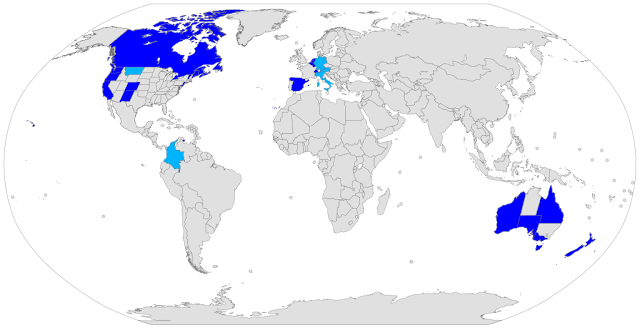World Stroke Day on October 29th 2024
Even this year the campaign highlights the importance of stroke prevention and encouraging us all to take steps to be GreaterThan stroke - the motto of this year. I like to share again the signs of stroke and how to see it in my article today. I you like check out the World Stroke Day Campaign
Know All the Signs of Stroke
Be or make yourself familiar with the stroke symptoms in B.E. F.A.S.T. A stroke is a very serious medical emergency. Symptoms come on suddenly, and every minute counts. The time window for this is narrow; the clinical therapy should, if possible, begin within 3 to 4 hours after the first stroke symptoms appear. And make yourself familiar with the the Differences in stroke symptoms between Women and Men
BE FAST
The longer someone having a stroke waits to get treatment, the higher the chance of permanent damage or even death. B.E. F.A.S.T. Know what signs to look for:
B as in Balance - balance issues? - Do they have loss of balance or are they dizzy? Are they walking differently?
E as in Eyes - eyes / vision problems? - Can they see out of both eyes OK? Ask them if they have vision loss, or blurry or double vision.
F as in Face - face drooping? _ Does one side of their face look uneven or like it is drooping? Ask them if their face feels numb. Tell them to smile and check if their smile is uneven.
A as in Arm - arm weakness? - Does one of their arms feel numb? Ask them to raise both arms and see if one arm drifts downward.
S as in Speech - difficulty with speech? - Is their speech hard to understand? Are they confused? Are they having trouble understanding you?
T as in Time - Time to call the emergency! - If someone is showing any of these signs, call 911 right away - in Germany and Europe 112 ( EU Emergency number). Note the time their first symptoms appeared and share that information with first responders.
... there are other important symptoms to recognize. What’s more, men and women may experience and report stroke symptoms differently. When a blockage occurs in different areas of the brain, it can cause numbness, weakness, language dysfunction or unsteadiness. The symptoms will differ based on the different areas of the brain and its functions.
During a stroke, most people typically report a sudden onset of any of these symptoms:
- Numbness, weakness or paralysis in the face, arm or leg, especially on one side of the body
- Confusion, trouble speaking or trouble understanding
- Trouble seeing in one or both eyes
- Difficulty walking, dizziness, or loss of balance or coordination
- Severe headache with no known cause
Women may also report:
- Hiccups
- Nausea
- Chest pain
- Fatigue
- Shortness of breath
- A racing heartbeat
Women are also more likely than men to report generalized weakness and cognitive dysfunction as stroke symptoms.
Most people don’t immediately associate these symptoms with a stroke - Because the types of symptoms that some women experience are nonspecific, it often takes longer to recognize that a stroke is happening. In fact, research reports that women take three times longer than men to seek care for stroke because more women live alone and feel that they can manage their symptoms. And that means until help is called the patient has lost valuable time.
Risk Factors
Smoking, high blood pressure, diabetes and high LDL cholesterol levels are major stroke risk factors for all people.
But women have more Risk factors ...
- Pregnancy: During pregnancy, there are changes in the coagulation system that put you at increased risk for stroke (based on studies). This can result in blood clots, which can restrict blood flow to the brain and cause a stroke.
- Preeclampsia: Research shows that a history of preeclampsia, a condition characterized by high blood pressure during pregnancy, doubles a woman's risk of stroke later in life.
- Birth control pills: Oral contraceptives with a higher dose of estrogen are associated with increased risk of stroke.
- Migraine with aura: There is some connection between this and ischemic stroke (caused when an artery supplying blood to the brain is blocked), especially in women with other vascular risk factors.
- Atrial fibrillation. Although an irregular atrial heart rhythm puts anyone at a higher risk of stroke, it is more likely to cause stroke and more severe resulting complications in women.
Every Minute Matters
- Early treatment can make a key difference in recovering from a stroke.
- Knowing and recognizing stroke symptoms can help you to get proper care faster,
- ... which dramatically improves the number of interventions available.
Let us make everyone aware of it - on this day
Stroke is a challenge, but it’s not impossible to overcome. Let’s inspire each other to never give up - And let us take stroke as a reminder that we need to cherish every moment we have. Let’s live our lives to the fullest and make the most of every day.






Comments
Post a Comment